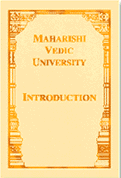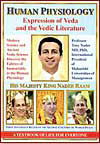| |
| Introduction to Sanskrit - Parts One and Two by Thomas Egenes |
 |
Whether you are a teacher or a student, this is best book on the market. It includes the
alphabet, pronunciation, grammar, and vocabulary.
Both Devanagari script and transliteration are used. |
|
Buy Vol. 1 |
|
|
Buy Vol. 2 |
|
| |
| Sanskrit-English Dictionary by Sir Monier-Williams |
 |
Originally published in 1899, it remains the only comprehensive
Sanskrit-English dictionary, comprising 160,000 words. It is
etymologically and philologically arranged with special reference to cognate
Indo-european languages.
|
|
Buy Now |
|
| |
| Sanskrit Grammar by William Dwight Whitney |
 |
This classic, which was first published in 1875, is a great reference book.
It is very readable and has detailed descriptions of the language and all the parts of grammar.
It has stood the test of time.
|
|
Buy Now |
|
| |
| Sanskrit Manual by Roderick S. Bucknell |
 |
A Quick-Reference Guide to the Phonology and Grammar of Classical Sanskrit.
The beauty of this book is that it has an index of verb stems, verb endings and noun endings.
For example, you can look up dadarsha in the index, and it will point you to the root drsh.
If have a verb that ends in -ata, it will lead you to the possible paradigms that use that ending.
The book also has a very comprehensive list of major parts of the verb, listing 400-odd roots.
|
|
Buy Now |
|
| |
| Concise Dictionary of Indian Philosophy: Sanskrit Terms Defined in English by John Grimes |
 |
This is a good dictionary for a new
Vedanta or Sanskrit scholar or spiritual seeker.
In this concise revised edition, Sanskrit terms are defined clearly in English
alphabetically, including transliteration and alternate meanings of terms.
In addition, the Devanagari script
is in a nice, clear print.
|
|
Buy Now |
|
| |
| Yoga Philosophy of Patanjali by Swami Hariharananda Aranya |
 |
A good translation. Very scholarly and thorough. Includes a translation of Vyasa's commentary
which sheds much light on the original work.
|
|
Buy Now |
|
| |
| Thirty minor Upanishads, including the Yoga Upanishads translated by K. Narayanaswami Aiyer |
 |
One of very best translations available of nice collection of short upanishads.
Highly recommended.
|
|
Buy Now |
|
| |
| The Principal Upanishads translated by S. Radhakrishnan |
 |
This rare centenary edition provides 18 of the principal Upanishads translated by the famous philosopher.
It contains Roman script, valuable introductions, English translation and illuminating notes.
|
|
Buy Now |
|
| |
| Devi-Mahatmyam (The Chandi) by Sri Ramakrishna Math |
 |
Popularly known as Chandi, used in India for daily Chanting. The 700 verses are
about the triumph of Mother Divine Durga over the forces of evil.
|
|
Buy Now |
|
| |
| The Bhagavad Gita translated by Winthrop Sargeant |
 |
This is the only complete and accurate translation that provides an inter-linear
word for word translation along with the devanagari characters and their transliteration.
|
|
Buy Now |
|
| |
| The Bhagavad Gita translated by Ramanda Prasad |
 |
Complete 18 chapters with Sanskrit, transliteration and translation. The unique feature of this
translation is the parallel references of each Gita verse to 25 other Vedic texts.
|
|
Buy Now |
|
| |
| Maharishi Mahesh Yogi on the Bhagavad-Gita A Translation and Commentary Chapters 1-6 |
 |
This translation of the Bhagavad Gita is the most eloquent available.
It is a very clear, accurate and beautiful translation which is a joy to read.
The commentary is also excellent. It maintains a consistent, logical and fascinating
explanation of the text. The original Devanagari script is included but no transliteration. |
|
Buy Now |
|
| |
| Introduction to Maharishi Vedic University |
 |
Maharishi Mahesh Yogi describes the knowledge in this book as
the beacon light of Vedic Civilization, celebrating perfection in enlightenment and fulfillment.
Special
emphasis is given to Maharishi's Absolute Theory of Education which delivers the fruit of
all knowledge to everyone. Other topics include What Is Consciousness?, The Vedic Structure
of the Constitution of the Universe, and the Eternal Cycle of Natural Law.
|
|
Buy Now |
|
| |
| Human Physiology — Expression of Veda and the Vedic Literature by Professor Tony Nader, MD, PhD |
 |
Professor Nader has found that the forty branches of Veda and the Vedic Literature, are the fundamental basis and essential ingredient of the human physiology, and that there is a one-to-one correspondence between the structures and functions of the different branches of Vedic Literature and the structures and functions of the human physiology.
|
|
Buy Now |
|
| |













